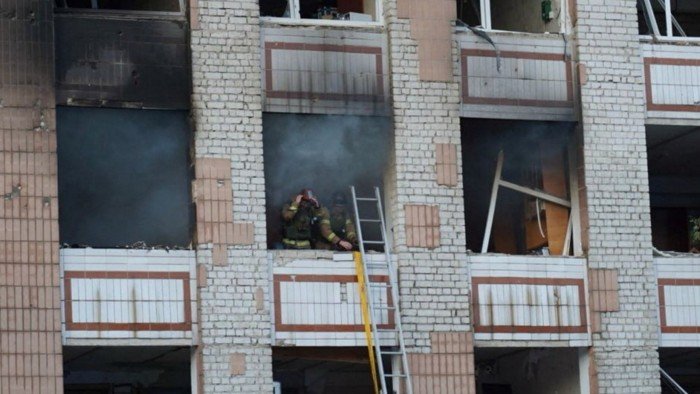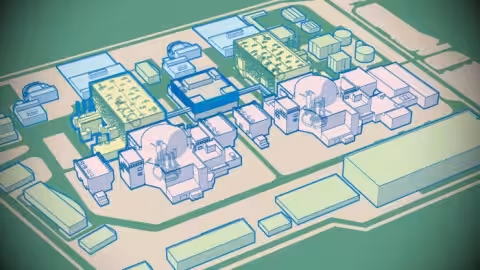Russia launched the most extensive aerial bombardment of Ukraine since its full-scale invasion, according to Kyiv, signalling a sharp escalation in Moscow’s campaign and further undermining fragile hopes for a negotiated resolution to the war now in its fourth year.
Ukraine’s air force said Russia had fired a staggering 537 aerial weapons in a single overnight barrage that began late on Saturday, including 477 explosive drones and decoys and 60 missiles of various types. Ukrainian air defences intercepted 211 drones and 38 missiles.
The scale of the assault marks a dramatic intensification in Russia’s strategy. Ukrainian officials say Moscow aims to systematically degrade the country’s limited air defence network and exhaust its western-supplied arsenal.
Ukraine’s air force said one of its F-16 pilots, Lieutenant Colonel Maksym Ustymenko, was killed after his aircraft sustained damage while downing seven aerial targets. He steered the plane away from populated areas, it added, but was unable to eject in time.
To the south in Kherson, regional authorities said one man was killed in a drone attack. In Kharkiv, in the north-east, two men were killed when a drone struck their car, according to the regional governor. Residential buildings sustained damage in several other cities.
In Kyiv, residents took refuge in bomb shelters and metro stations deep underground, while the booms of air defences intercepting Russian drones reverberated above. Several missiles and drones struck critical infrastructure in the western city of Lviv, which sits close to the border with Nato member Poland, according to the mayor.

Ukraine has used fighter jets for air defence in part because of its dwindling supply of surface-to-air defence systems and interceptor missiles. The Trump administration has so far declined to sell Kyiv more of the prized Patriot air defence systems, a few of which were provided in security packages under President Joe Biden.
Ukraine’s President Volodymyr Zelenskyy called on western partners to step up support for his war-battered nation and reiterated Kyiv’s readiness to buy more air defence systems from Washington.
“Ukraine needs to strengthen its air defence — the thing that best protects lives,” Zelenskyy wrote on X. “These are American systems, which we are ready to buy.
“Moscow will not stop as long as it has the capability to launch massive strikes,” he wrote, adding that “pressure on the aggressor is needed” in the face of Russia’s air attacks and its summer ground offensive.
Russia attacked Ukraine with more than 114 missiles, over 1,270 drones and nearly 1,100 glide bombs in the past week, he said. Most of the drones launched overnight were Russian-Iranian-type suicide drones, he said.

Ukrainian defence minister Rustem Umerov told reporters on Friday that Russia had increased its combined missile and drone strikes in recent months. Moscow’s aim is “to exhaust our air defence”, he said, “and apply psychological pressure”.
Ukraine had been “systematically working for years” on finding effective solutions to counter the Iranian-designed attack drones, Umerov said.
“It has been a constant intellectual struggle”, he said, due to Russia’s ever-evolving tactics. The Russian drones based on Iran’s Shahed design now fly faster and higher, above the range of Ukraine’s mobile air defence units. The drones also pack a larger warhead than the original ones first used in October 2022.
Meanwhile, Ukraine’s top commander, Oleksandr Syrsky, warned that on the eastern battlefields, Russian troops were “attempting to break through our defences and advance in three operational directions”.
Aided by powerful glide bombs and unjammable fibre optic drones, Russian forces have advanced there at the fastest pace since November and are threatening to encircle the strategic eastern cities of Kostyantynivka and Pokrovsk.
Further north, Moscow’s troops are pushing from Russia’s Kursk region into Ukraine’s Sumy region, and are nearly within artillery range of the regional capital.
Senior Ukrainian officials told the Financial Times that they expected Russia’s ground offensive and air campaign to further intensify over the summer.
“Putin long ago decided he would keep waging war, despite the world’s calls for peace,” Zelenskyy said on X.
Zelenskyy also signed a decree on Sunday to withdraw Ukraine from the Ottawa Convention, which bars the production and use of anti-personnel mines.
Roman Kostenko, a member of parliament and military commander, said parliamentary approval will be needed to finalise the withdrawal, but called it “a step long demanded by the reality of war”.
“Russia is not a party to this convention and uses mines extensively against our military and civilians,” he wrote on Facebook. “We cannot remain bound by restrictions when the enemy faces none.”























